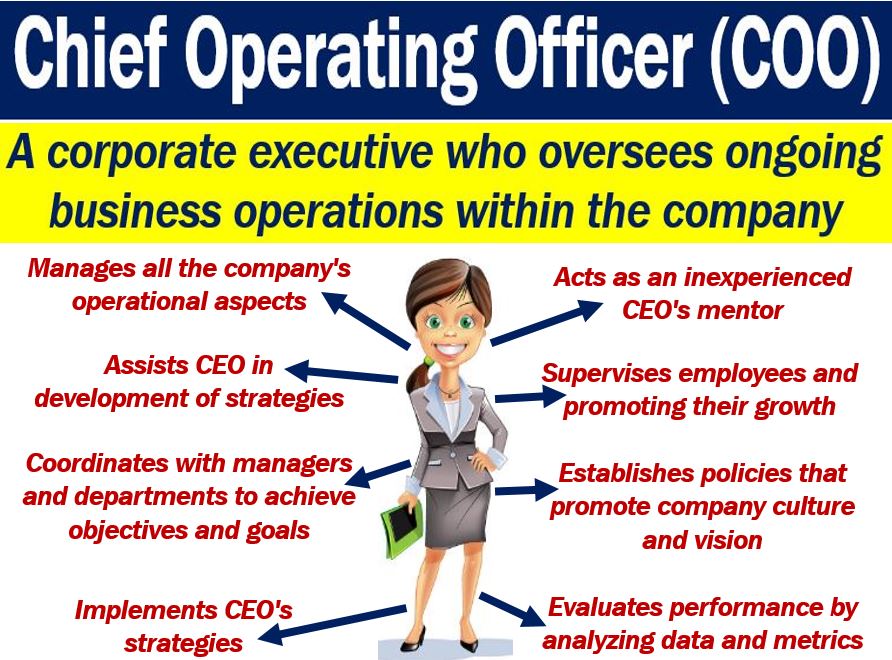A COO or Chief Operating Officer is the person in charge of fulfilling a company’s operational strategies. We also call this person the Chief Operations Officer, Operations Director, or Director of Operations. He or she is in charge of the company’s day-to-day operations.
The CEO, on the other hand, handles the overall management of the company. CEO stands for Chief Executive Officer.
COO – second in command
The Chief Operating Officer is second in command after the Chief Executive Officer (CEO). His or her role is to execute the strategies planned by the management team or board of directors. The CEO may also create strategies for the Chief Operating Officer to implement.
Meanwhile, the CEO can focus on long-term goals and strategies. In some cases, the COO may also determine whether the company requires specific plans to complete the CEO’s strategies.

If the company plans to increase the production of a good, for example, the COO makes sure this happens. He or she makes sure this happens by working with the necessary departments in the company.
The Chief Executive Officer reports to the CEO regarding a project’s status. Sometimes, they may also report to the board of directors.
Put simply; the CEO plans the strategy and oversees it while the COO implements it. In other words, one thinks things up and gives the orders while the other puts them into action.
It is important that trust, communication, and synergy exist among the CEO, COO, CIO, and CFO (Chief financial officer). CIO stands for Chief Investment Officer.
Believing in the company’s strategy and not letting their egos cloud their judgment and attitudes are also important.
COO duties
The COO’s duties may vary depending on the company’s focus and needs. Some of the most common roles of the Chief Operating Officer are:
- Executing and implementing the company’s strategies.
- Implementing an organizational change or new initiative.
- Supervising employees and promoting their growth.
- Assisting or complementing the skills and experience of the CEO.
- As a mentor, guiding an inexperienced or young CEO.
- Working next to the CEO as a partner.
- Learning from the CEO and eventually taking that position.
COO – qualifications and experience
A Chief Operating Officer must have a broad knowledge of and wide experience in business management.
Some companies require the person to have up to 15 years’ experience in business management.
They must have good communication skills, strong leadership, and creativity. These skills are crucial because they are in charge of handling all the departments in the company.
Most companies require that COOs have degree-level academic qualifications. However, many top executives in large corporations have no university degrees.
We usually refer to abbreviations that begin with ‘c’ as ‘c-level executives.’ A COO, for example, is a ‘c-executive’ because his or her position begins with the letter ‘c.’ The ‘c‘ stands for ‘chief.’
There are several abbreviations for positions that begin with ‘chief’ or ‘c.’ The CMO, for example, is in charge of developing and overseeing the company’s marketing and advertising programs. CMO stands for Chief Marketing Officer.
